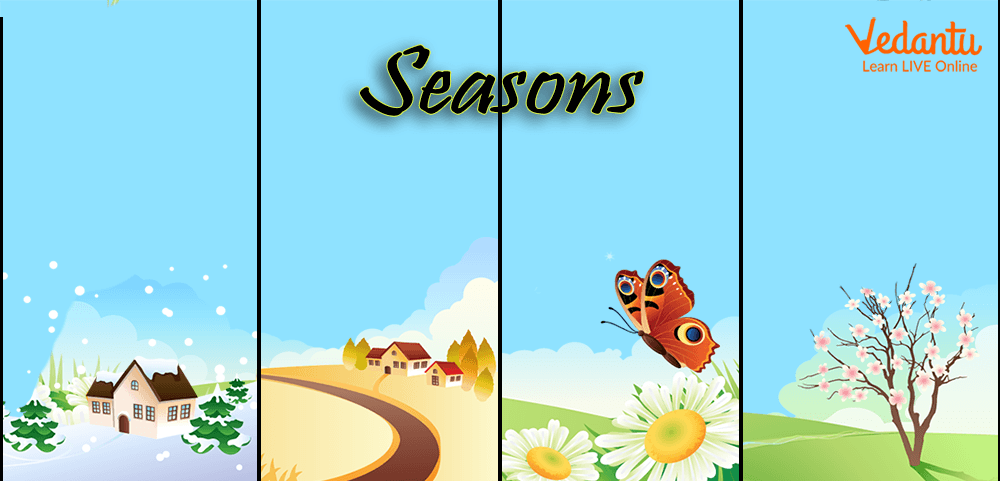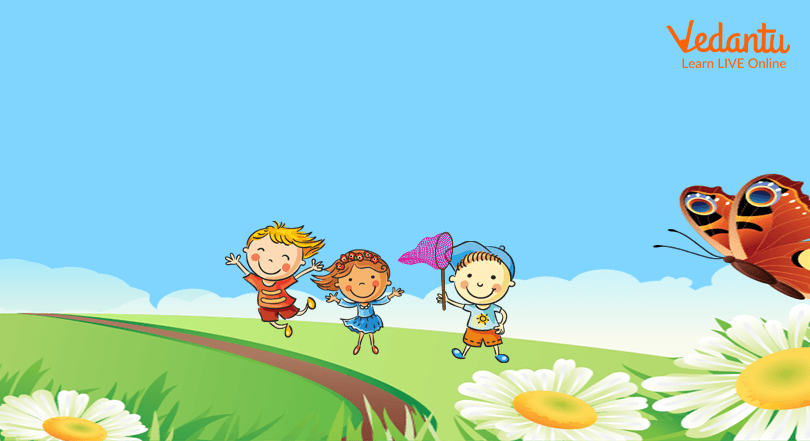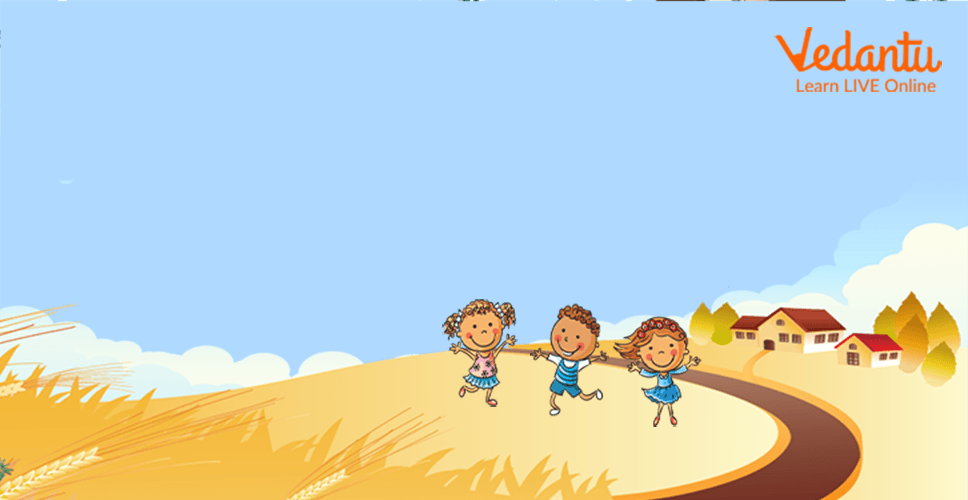




What Happens in Each Season? Key Facts and Seasonal Changes
The weather undergoes regular shifts as the year progresses. The seasons are divided into four segments that represent the cycle of weather changes. They are winter, spring, summer, and autumn or fall.
Children look forward to playing with fallen leaves in the autumn or creating the prettiest and most amazing snow figures when winter arrives. Not to mention the anticipation of summer approaching and the opportunity to visit the beach! Alternatively, some children may be delighted to see the plants grow stronger and flowers bloom during the spring season.
Seasons, on the other hand, do not occur at the same time all over the world. There is a variation between the Northern and Southern Hemispheres, which might cause confusion while learning about seasons.

The Four Seasons for Kids
What Causes the Four Seasons of the Year?
Over the course of a year, the Earth travels around the Sun. The Earth is tilted during its voyage around the Sun, which is why we have seasons. The tilt of the Earth impacts the quantity of daylight that each hemisphere receives, causing the temperature to rise or fall periodically.
Winter, for example, occurs in December, January, and February if you live in the Northern Hemisphere — that is, in the north of the equator, such as in Europe, the United States, or India. The Northern Hemisphere is tilted away from the Sun during this time, and the days are shorter and colder. Whereas, it is the opposite in the Southern Hemisphere.
The easiest approach to understand this is to teach your children the features of each season so that they can distinguish between them easily.
The Four Seasons for Kids
Spring
The daylight hours become longer in the spring, the sun shines a little brighter, and the flowers flourish! Also, the weather begins to cool, and it may be windy and rainy at times.

Kids Playing in the Spring Season and Catching Butterflies
Summer
The hottest season of the year is summer. In a clear sky, the sun shines brilliantly and the days are longer. The trees are covered in leaves at this time of year. The weather is nice and the days are sunny, so it's certainly the best time to go to the beach!

Kids Enjoying in Summer Season at Beach
Autumn or Fall
When autumn arrives, the days become shorter, the leaves on the trees begin to fall, and piles of leaves litter the ground. In addition, the temperatures begin to drop, and it starts getting a bit colder every day. Autumn is known as the harvest season in several regions of the world because this is when most crops are ready to be harvested.

Kids Playing in the Autumn Season
Winter
It is the most bitterly chilly time of the year! The nights are long and the days are brief. It generally snows in some regions, while it is the rainy season in others. The cold season, commonly known as the winter, is the ideal time to practise snowboarding and skiing.

Kids Playing with Snow in the Winter Season
Conclusion
We hope you now have a clear understanding of what the four seasons are and what changes in the weather can be observed during each of these seasons. We have also tried to mention at least one special feature of each season. As an activity, try to find out about a few special celebrations or festivals that occur during these seasons and write them down in your notebook.
FAQs on Seasons of the Year: Simple Guide for Students
1. What are the four main seasons of the year?
The four main seasons of the year are distinct periods with their own weather patterns, and they help us understand the annual cycle. The four seasons are:
- Summer: The hottest time of the year, with long and sunny days.
- Monsoon (Rainy Season): A period marked by heavy rainfall, crucial for farming.
- Autumn: The season after monsoon when temperatures cool down and trees may shed their leaves.
- Winter: The coldest time of the year, with shorter days and chilly nights.
2. How do our daily lives change with each season?
Seasons have a big impact on our daily activities, the food we eat, and the clothes we wear. For example:
- In summer, we wear light cotton clothes, enjoy cold drinks, and often play indoors to avoid the heat.
- During the monsoon, we use raincoats and umbrellas and see fresh greenery everywhere.
- In winter, we wear warm woollen clothes like sweaters and jackets and enjoy hot foods like soup.
3. Why are seasons important for plants and animals?
Seasons are vital for the life cycles of plants and animals. For plants, seasons dictate when they grow, flower, bear fruit, and shed leaves. The monsoon brings the water they need to grow. For animals, seasons influence their behaviour, such as hibernation for some animals in winter or migration for birds to find warmer climates.
4. Which months are generally associated with each season in India?
While it can vary slightly by region, the seasons in India are generally divided across the year as follows:
- Summer: From March to June
- Monsoon: From July to September
- Autumn: From October to November
- Winter: From December to February
5. What is the simple explanation for why seasons change?
The change in seasons is caused by the Earth's tilt as it travels around the Sun. As the Earth moves, different parts of it get more direct sunlight at different times of the year. When our part of the Earth is tilted towards the Sun, we receive more direct sunlight and heat, which causes summer. When it's tilted away, we get less direct sunlight, leading to winter.
6. What is the difference between weather and a season?
It's a common point of confusion, but the difference is simple. Weather refers to the atmospheric conditions on any given day, like if it is sunny, cloudy, or rainy. It can change within hours. A season, on the other hand, is the average weather pattern over a period of several months. For instance, the winter season is characterised by many days of cold weather.
7. Can you give examples of festivals that are celebrated in different seasons in India?
Yes, many Indian festivals are closely linked to the changing seasons. For example:
- Summer: Holi and Baisakhi are celebrated, marking the end of winter and the harvest season.
- Monsoon: Teej, Raksha Bandhan, and Ganesh Chaturthi are celebrated during the rainy months.
- Autumn/Winter: Dussehra, Diwali, and Christmas are celebrated when the weather becomes cooler.





















